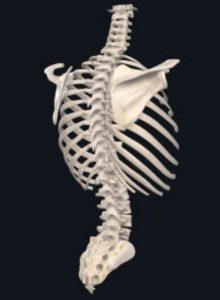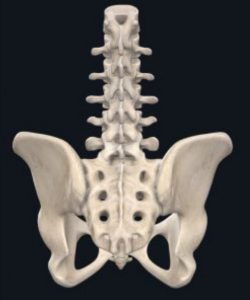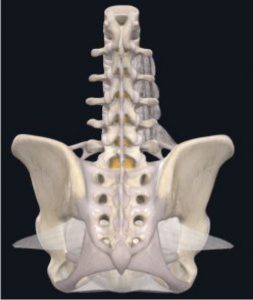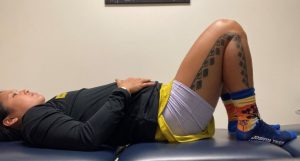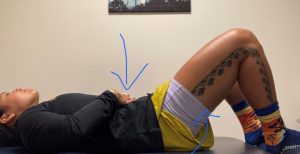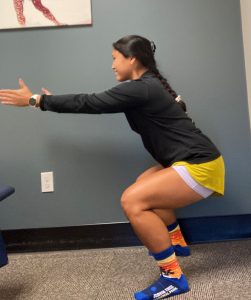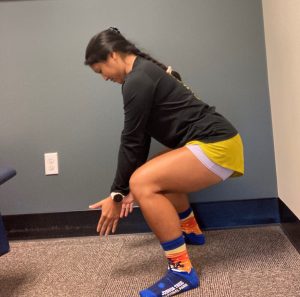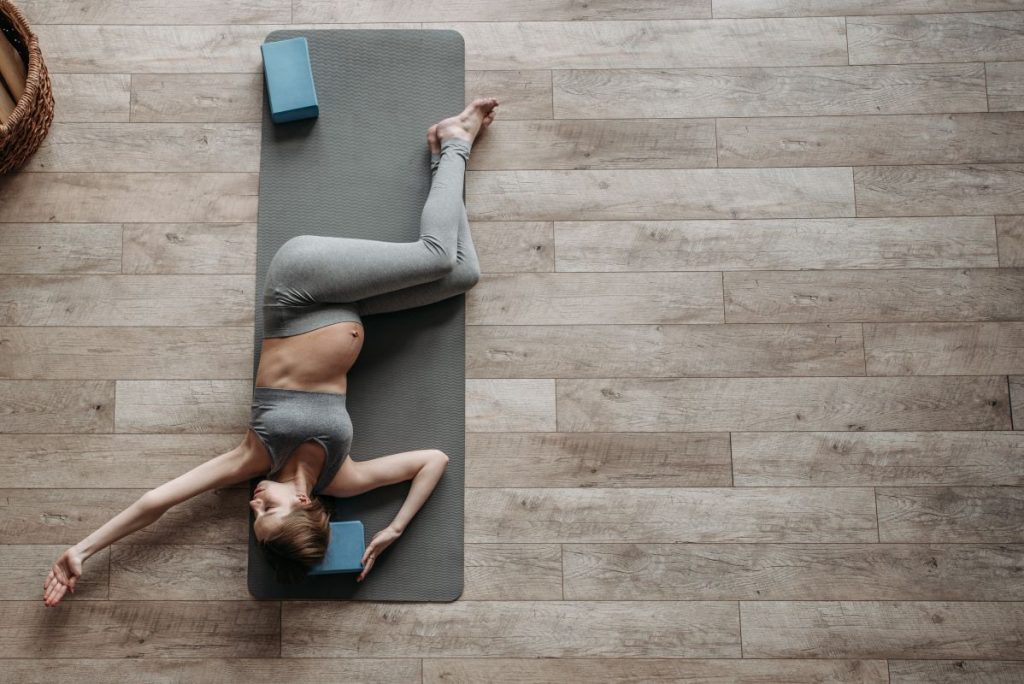
Congratulations! You’re currently embarking on a tumultuous, but exciting pregnancy journey.
As you can imagine, your body goes through a plethora of changes during this nine-month span, affecting everything from your physical appearance to your emotional disposition… and everything in between.
But how much will these changes affect your physical ability? Can you still exercise? Why do you have new-found aches and pains?
There are many hormonal changes in addition to anatomical shifts that occur throughout the various stages of pregnancy, which may result in low back pain, loss of balance, decreased posture, and increased fatigue with simple activities.
Spine and Pelvic Anatomy
Let’s start by looking at the anatomy heavily affected by changes in pregnancy. The spine and the pelvis are two bony structures that provide a literal “backbone” through which your core, pelvic floor, lumbar, and hip muscles connect and help hold you upright in good posture.
The spine has 24 vertebrae (bony segments) that are classified by levels and grouped together by common bony structure, contribution to curvature, and spinal movement pattern.
- The cervical spine contains seven segments that form a lordotic (concave) curve we recognize as the neck.
- The thoracic spine, or midback, contains 12 segments forming a kyphotic or convex curve.
- The lumbar spine, or low back, contains five large segments that shift in position and generally increase in lordosis (concave) positioning with the onset of pregnancy.
The sacrum is located directly below the lumbar spine and attaches the hips to your spine. The sacroiliac joints can be found on either side of the sacrum to the pelvis, forming a dome-like structure that contains your pelvic contents including the pelvic floor muscles, uterus, and other reproductive organs.
- Cervical to Sacrum | Image courtesy of Complete Anatomy
- Lumbar, Sacrum, and Pelvis | Image courtesy of Complete Anatomy
Many of the ligaments in the pelvis (including the sacroiliac ligaments) play a role in the stabilization of your hips, but also spinal position. When the natural curvature of your spine changes throughout the nine-month course of pregnancy, the amount of load placed on these joints also changes and may require increased demand on the ligamentous and muscular structures.
Let’s go into more detail about hormonal and postural changes during pregnancy and how they can contribute to back pain.
Impact of Hormones on Spinal Structure
Hormonal changes are often responsible for fluctuating energy levels, pain, and mood. During pregnancy, these hormone fluctuations also affect the composition and integrity of the pelvic ligaments and muscles.
Progesterone affects the tone of smooth muscles throughout the body, but heavily in the pelvic girdle and lumbar spine. This function reduces premature contractions but also may result in increased stiffness and tightness in the low back, with symptoms starting very early in pregnancy. Constipation is another unfriendly side effect, which in turn, places increased strain on the pelvic floor and lumbar spine during bowel movements
A second hormone, relaxin, increases throughout the pregnancy in preparation for the body to deliver your baby. It is generally active most through the third trimester but may have an effect even months postpartum. Relaxin triggers the loosening of the ligaments that surround the pelvic area to improve joint mobility, allowing space for a vaginal birth.
- Back View: Ligaments Surrounding Sacrum and Pelvis | Image courtesy of Complete Anatomy
These changes in muscle and ligament integrity in the pelvic girdle and low back result in increased demand for muscular stability, especially in the hips and core. Additionally, if you notice increased abdominal pressure, pelvic floor discomfort, or urinary incontinence, seeing a Women’s Health specialist or pelvic floor-certified PT may be a good option for you!
Changes in Body Composition and Posture
In addition to the anatomical changes you’ll experience throughout your pregnancy, a woman’s overall body mass and shift in weight distribution plays a big role in postural changes and balance.
Depending on your lifestyle and body composition, women may gain anywhere between 25-40lbs during pregnancy, as a result of:
- Increased fat storage, used for protection and energy storage
- More breast tissue, which may fluctuate and persist postpartum
- The additional weight of the fetus (remember, full-term babies weigh anywhere from 5-10lbs or more when they’re born)
Any increase in weight places a strain on your body. Growth in your breasts and belly result in a forward shift of your center of gravity, forcing your posture to adjust to avoid losing your balance. It becomes increasingly important to ensure your muscles are strong enough to not only help carry the extra weight and stress, but also, assist in steadying the body when moving.
In addition to changes around and through the pelvic girdle, the forward shift of weight during pregnancy may pull your shoulders and neck forward, requiring increased demand on your extensor muscles to hold yourself upright.
Muscle imbalances involving tightness and weakness to the hip flexors, glutes, core, and pelvic floor may result in pain and difficulty performing daily activities or even at rest. Because these changes are gradual, they may persist postpartum, as carrying an infant requires similar strength and postural demands.
Diastasis Recti and the Effects of Cesarean Sections on Your Core Musculature
Diastasis recti refers to the separation of the abdominal muscles, or your rectus abdominus, with the expansion of the abdomen area, especially during the 2nd and 3rd trimesters of pregnancy. According to the Cleveland Clinic, diastasis recti occurs in about 60% of pregnancies, with 40% of that population being unresolved 6 months postpartum. (1)
The rectus abdominus (also known as your six-pack abs) not only functions to flex the spine forward, but also helps contain the abdominal contents and stabilize the low back and pelvis when performing bending, lifting, squatting, and high-impact activities. For this reason, you should implement a core stabilization program throughout pregnancy and postpartum…which you can get from a physical therapist!
Cesarean sections, commonly known as c-sections, are the surgical delivery of a baby when natural vaginal birth is determined unsafe by your doctor. Surgeons deliver the baby by cutting through the abdominal wall to access the mother’s uterus. Because of this trauma to the abdomen and associated musculature, and the time required for healing, you may experience decreased stability and core strength up to months or even years following the c-section if not addressed.
Whether you’re a new mom or a seasoned veteran, conservative treatment with an outpatient or pelvic floor PT may be beneficial if you are experiencing persistent abdomen and low back pain, or pelvic instability/incontinence!
Which Exercise Can I Do During Pregnancy? And Postpartum?
There are many benefits to continuing a healthy, active lifestyle throughout the stages of pregnancy and immediately following. According to the American College of Obstetricians and Gynecologists, physical activity while pregnant does not increase the risk of low birth weight, miscarriage, or early delivery. In fact, women who continue with regular exercise may experience a decreased risk of preeclampsia (pregnancy-related high blood pressure), gestational diabetes, excessive weight gain, and even postpartum depression. (2)
You should follow these precautions when engaging in exercise during pregnancy:
- Stay hydrated! Drink plenty of water before and after working out, but also during.
- Wear supportive clothing! Maternity performance sports bras, leggings, and belly supports are specially designed to reduce discomfort with higher-impact activities and are built to allow good circulation and temperature regulation.
- Be aware of your temperature! Wear clothing and exercise in environments that do not accelerate heat exhaustion or dehydration.
- Change positions frequently! Especially during the third trimester, the weight of your uterus when lying on your back can affect blood pressure and circulation (and overall comfort). Try not to stay in one position for too long.
- Avoid contact sports! Refrain from activities that risk general trauma and impact on the abdomen area.
Any of the following symptoms may indicate the need to follow up with your doctor if persisting during exercise or while at rest:
- Fluid gushing or bleeding from the vagina
- Dizziness or shortness of breath
- Abdominal pain or regular uterine contractions
- Belly heaviness or muscle weakness
While the level and intensity of exercise may vary amongst women, the following are safe activities to introduce movement to your changing body!
- Walking
- Swimming or water aerobics
- Stationary biking
- Yoga or Pilates, modified as needed
Exercises Until You See a Physical Therapist
The following are 2 exercises that may assist in improving posture, lifting mechanics, and overall comfort level throughout the various stages of pregnancy. They may also be applied post-partum as you find yourself frequently lifting, carrying, and pushing that new bundle of joy!
Note that practicing correct body mechanics when performing household tasks, and even when bending over your baby’s crib or lifting a car seat postpartum, can help to reduce the risk of injury and discomfort as your body adjusts to its new form.
Transverse abdominus activation/posterior pelvic tilt
Your transverse abdominus (TrA) is a deep core muscle that provides support to your trunk similar to a back brace. Ideally, having a strong TrA will prevent you from needing external lumbar support!
- Bend your knees while lying on your back. Be sure to relax your shoulders and place your hands at your side or over your belly.
- As you inhale, allow your belly to expand and the belly button to rise toward the ceiling. On exhale, draw your belly button down toward the floor and narrow the space between that and your low back. As you narrow the space, tilt your pelvis toward your trunk, scooping the tailbone off the floor.
- Imagine you have a bowl of soup sitting on your pelvis. As you tilt your pelvis posteriorly, your soup bowl should also be moving in the direction of your face!
Squatting/lifting form
Squatting utilizes similar muscles to those required for sitting and standing from a chair. You can practice this motion from a low surface, with a focus on bracing your abdominals and pushing through the glutes to stand instead of arching at the low back. Refrain from holding your breath!
- You should notice your spine stays in an aligned position from head to tailbone, and your hips “hinge” instead allowing your torso to collapse over your legs.
- Try to keep your shoulders relaxed! Pull the shoulder blades down and back to prevent overusing your upper traps and neck muscles when lifting!
This can be practiced functionally when picking objects off the floor, or you can even incorporate resistance with dumbbells, kettlebells, bands, or medicine balls at the gym (see picture two for form).
Reach Out!
For more information and advice regarding lifting form, strength training, or postural adjustments during and after pregnancy, see a physical therapist!
You can call JACO Rehab at (808) 381–8947 to schedule an appointment with us. JACO Rehab provides 1-on-1 physical therapy sessions for over 50 minutes that are tailored to your individual needs and goals. Let us help you through this big transition in your life! Contact us to schedule an appointment.
Written by Kristen Shimabukuro, DPT
Sources
1. Diastasis Recti. Cleveland Clinic. https://my.clevelandclinic.org/health/diseases/22346-diastasis-recti
2. Exercise during pregnancy. ACOG. https://www.acog.org/womens-health/faqs/exercise-during-pregnancy
